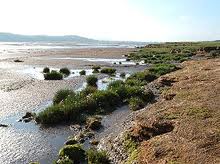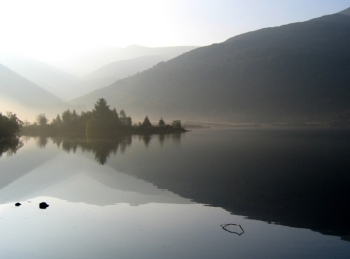The ironically titled Managing Radioactive Waste Safely (MRWS) process failed on many levels, but the extent of its failure with regard to environmental protection was truly spectacular even by its own standards.
Any new process in Cumbria is well placed to achieve the same distinction, as the protagonists are the same organisations.
To recap, MRWS singularly failed to even identify:
(i) Special Areas of Conservation (SACs),
(ii) a Special Protection Area (SPA),
(iii) a RAMSAR site
(iv) plus numerous Sites of Special Scientific Interest (SSSI) in West Cumbria.
What has thus completely escaped its attention is the enormous significance and importance of such designations and their legal protection.
In fact, nowhere in the MWRS “report” is there any reference at all to Natural England, to any SAC, SPA or SSSIs, or indeed to any of the UK and European legislation relating to such sites.
Given the extent of the legal, and other, protection afforded by such designations, the MRWS report and process were thus fundamentally legally flawed.
OUR SACs, SPA and RAMSAR
The Rivers Derwent (including Bassenthwaite Lake) and Ehen are both SACs.
The Derwent catchment makes up most of Allerdale. Derwent is a SAC for a number of reasons, including being a habitat for Atlantic salmon, otters and lampreys as well as exhibiting the unique characteristics of the aquatic environment itself.
The Ehen has been designated SAC as it contains England’s only remaining population of Fresh-Water Pearl Mussels – probably because it is one of the cleanest rivers in England. Wild Ennerdale is a prime example UK rewilding.
The Upper Solway is both an SPA and an RAMSAR site.
SAC and SPA status confers the highest level of protection afforded under EU law.
In the UK, SACs/SPAs and RAMSAR sites are governed by The Conservation of Habitats and Species Regulations 2010 (the Habitat Regs).
Since the UK Government can’t contract out of EU directives, it has to implement them fully.
Under the Habitat Regs, Natural England has a variety of powers, including issuing special conservation orders and creating byelaws.
Most importantly, the Habitat Regs (see Reg 61 onwards) preclude any operations which adversely affect a SAC Site, the only exception being an overriding public interest. If there is an overriding public interest, damage can be inflicted on an SAC site – BUT ONLY IF THERE IS NO ALTERNATIVE SITE or other caveats.
This is why, if any repository were to affect a SAC, it would almost certainly fail, as there are clearly alternative sites elsewhere in England – given that around 30% of the UK has suitable geology!
OUR SSSIs
These are almost too numerous to mention.
For example, however, Ennerdale has three SSSIs:
(i) The Lake itself and its environs;
(ii) Ennerdale Fell and Pillar; and
(iii) The River Ehen.
See Ennerdale SSSIs
Since SSSIs are highly protected under the amended UK’s Wildlife and Countryside Act 1981, it is virtually impossible to do anything on a SSSI without NE’s consent.
See Protecting SSSIs
NIREX lessons
Even the Nirex process of the 19080s and 1990s, which got so much wrong, was right in excluding all National Parks and environmentally sensitive sites at an early stage; this was the one aspect of Nirex’s Site Selection process which was endorsed by the Inspector in the Nirex case.
Other relevant extracts from the Nirex judgment include:
“The fundamental importance of taking the environmental effects into account at the earliest possible stage has been agreed by McCullough J in Twyford Parish Council & Others v Secretary of State for the Environment [l992] 1 CMLR 276 & by Potts J in R v Secretary of State for the Environment. ex parte Greenpeace- [l9941 4 All ER 352.”
Also:
“The [IAEA] guidance suggests early identification of factors or criteria which might result in the rejection of a site during the planning stage and that they be investigated during the area survey (regional evaluation) stage, even if such factors are not among the most easily applied [idem, para. 3141]. The area survey generally involves regional mapping and site screening during which consideration should be given to important groundwater resources, national parks, historic monuments, national laws and regulations [idem, paras. 317 to 323].”
And:
“On the other hand, it was in accordance with international guidelines and national planning policy to exclude locations of national environmental importance from the initial area of search. Such locations should be examined only if a search of the rest of the country has failed to identify a suitable site.”
Water SupplyThe MWRS process was also defective in that it did not even exclude those areas of West Cumbria which are used for supplying water to West Cumbria, including Ennerdale Valley, Crummock Water/Buttermere/Loweswater Valley and Thirlmere catchment.
Moreover, Thirlmere supplies Manchester and thus accounts for a very significant proportion of the North West’s overall water supply.
From here?
At best, the past omissions, while undoubtedly negligent, were accidental; at worst, they were blatantly disingenuous. We don’t know which and are very anxious that the same mistakes should not be made again.
Let’s also not forget that, in terms of economic benefits, these protections play an important part in supporting Cumbria’s £2bn tourism industry employing 57,000 people.




![Ennerdale - Do not pollute [400px width]](https://cumbriatrust.wordpress.com/wp-content/uploads/2013/11/ennerdale-do-not-pollute-400px-width1.jpg?w=222&h=300)




You must be logged in to post a comment.